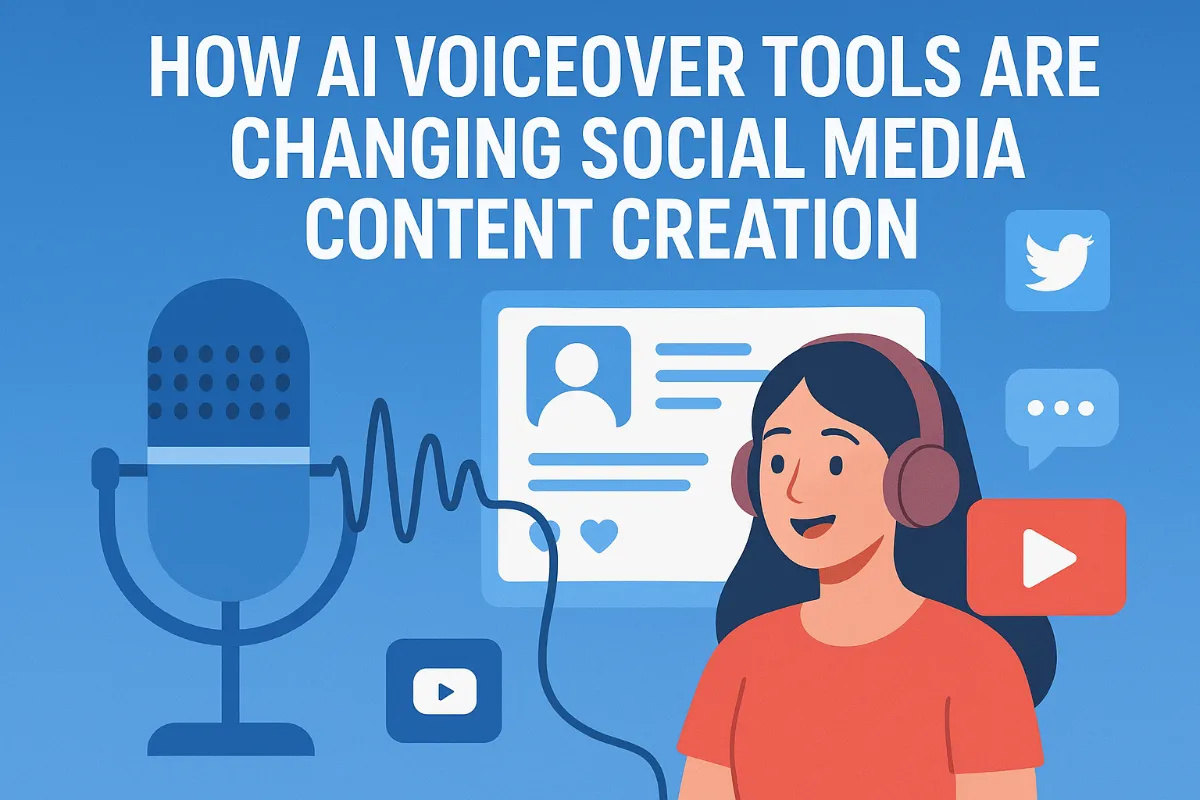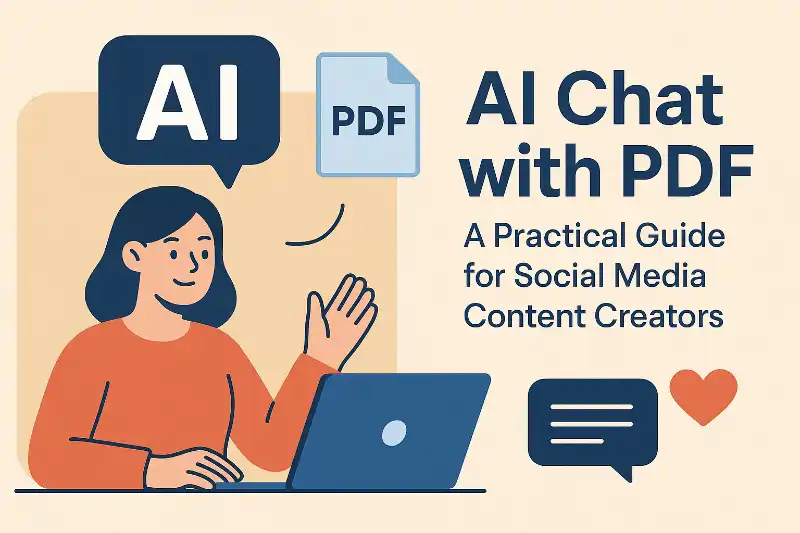Navigating the Ethical Minefield: AI Content Generation for Social Media
Understanding the Rise of AI in Social Media Content Creation
Are you ready for ai to take over your social media? Not so fast. While ai content generation is rapidly changing the digital landscape, it's more about augmentation than automation.
The rise of ai in content creation is undeniable.
- Europol's projection: By 2026, Europol Innovation Lab projects that 90% of online content could be synthetically generated, highlighting the scale of ai's potential impact.
- Increasing prevalence: We're already seeing ai-generated text, images, and videos flood social media, raising questions about authenticity.
- Impact of tools: Tools like ChatGPT have revolutionized content creation workflows, offering speed and efficiency but also ethical dilemmas.
Think of ai as your creative sidekick, not a replacement.
- Supplement to human creativity: Ai should enhance human strategic thinking, not overshadow it.
- Enhancing efficiency and ideation: Use ai to brainstorm ideas and streamline tasks, but don't let it dictate your entire strategy.
- Human oversight: Human oversight and quality control are crucial to maintaining brand voice and ethical standards.
Ai offers some tempting advantages:
- Cost-effective content creation: Ai can significantly reduce the costs associated with content creation.
- Rapid content production: Need a high volume of content? Ai can deliver quickly and efficiently.
- Eliminating manual tasks: Ai can automate slow, manual tasks, freeing up your time for more strategic work.
However, proceed with caution. As we delve deeper, we'll uncover the ethical minefield that comes with using ai in social media content creation.
The Core Ethical Dilemmas in AI Content
Ai-generated content presents a Pandora’s Box of ethical challenges for social media marketers. How do we navigate these murky waters and maintain integrity?
One of the primary concerns is plagiarism. Ai models are trained on vast datasets, and they might inadvertently reproduce copyrighted material without proper attribution. (A Practical Guide to AI and Copyright - by Oliver Patel)
- Defining plagiarism: In the context of ai, plagiarism occurs when ai-generated content copies existing work without giving credit.
- Risk of regurgitation: Ai can unintentionally extract and replicate copyrighted material, leading to legal repercussions. (Copyright Issues With Generative AI and How to Navigate Them)
- Strategies for originality:
- Human review: Always have a human editor review ai-generated content.
- Plagiarism checkers: Use tools to detect potential instances of plagiarism.
- Original prompts: Craft unique prompts that encourage original content generation.
Ai's tendency to generate inaccurate or fabricated information, often termed "hallucinations," poses another significant challenge.
- Ai hallucinations: Ai models might create false or misleading information, presenting it as factual.
- Importance of fact-checking: Human oversight is crucial to verify the accuracy of ai-generated content.
- Examples of misinformation: Imagine an ai tool confidently recommending a dangerous home remedy for a serious condition, which could have severe consequences.
According to a report referencing Ohio University's insights, if enough deliberate disinformation makes its way into the training models, it will show up in the output.
Ai models are trained on data, and if that data reflects societal biases, the ai will perpetuate those biases.
- Biased training data: Ai models can amplify existing stereotypes and prejudices present in their training data.
- Mitigating bias:
- Diverse datasets: Use varied and representative datasets to train ai models.
- Bias audits: Regularly audit ai-generated content for potential biases.
- Inclusive language: Ensure ai models are programmed to use inclusive and respectful language.
- Promoting diversity: Strive to create content that represents and respects diverse communities.
Ethical considerations are not just about avoiding legal trouble; they're about building trust and credibility with your audience.
As we move forward, we'll explore how to maintain authenticity in an era of ai-generated content.
Transparency and Disclosure: Building Trust with Your Audience
It's easy to think that if ai wrote it, you're off the hook for ethical considerations, but that's not the case. Transparency and disclosure are essential when using ai for social media content.
Why should you tell your audience that ai helped create the content they're seeing? It's simple: transparency builds trust and credibility.
- Building Trust: When you're open about using ai, you show your audience that you value honesty.
- Ethical Guidelines: Disclose ai use to adhere to ethical standards. According to TheBlogsmith, failing to disclose ai use can be a disservice to your audience.
- Effective Disclosure: Use clear, straightforward statements like, "This post was created with the assistance of ai."
Here are some examples of clear disclosure statements:
- "Ai was used to generate initial drafts, which were then edited and fact-checked by our team."
- "This image was created using ai tools, with human oversight to ensure accuracy and relevance."
- "The research for this post was aided by ai, but all analysis and opinions are our own."
Giving credit where it's due is just as important for ai as it is for human creators. How do you acknowledge ai's role appropriately?
- Acknowledge Ai's Role: Be upfront about how ai contributed to the content creation process.
- Avoid Listing AI as an Author: As the article "Ethical Use of Artificial Intelligence for Scientific Writing: Current Trends" explains, ai cannot be an author because it cannot be accountable.
- Use Acknowledgements and Method Sections: Detail ai usage in these sections, explaining the tools and processes involved.
For example, a financial firm might state in their method section: "Ai was used to analyze market trends, with human analysts verifying the findings and providing commentary." Retail companies could add to the acknowledgement section, "Ai tools were used to generate initial product descriptions, which were then reviewed and refined by our marketing team."
Being transparent about ai usage fosters trust and ensures you're ethically engaging with your audience.
Now that we've explored transparency and disclosure, let's examine how to maintain authenticity in your content.
Practical Strategies for Ethical AI Content Generation
Ai content generation is incredibly powerful, but how can you ensure you're using it ethically and responsibly? Let's dive into some practical strategies.
Social9 offers a suite of ai-powered tools that can significantly enhance your social media content creation. But it's essential to use these tools responsibly to maintain ethical standards.
- Brainstorming Content Ideas and Generating Initial Drafts: Social9's ai-powered generation can be a great starting point. Use it to spark your creativity and get a rough draft, but don't rely on it to produce the final product. Always infuse your own ideas and insights into the content.
- Enhancing Engagement with Social9's Smart Captions: Social9's Smart Captions can help boost engagement. However, always ensure the captions are factually accurate and align with your brand's voice. Don't sacrifice accuracy for the sake of engagement.
- Expanding Reach with Social9's Hashtag Suggestions: Hashtags are crucial for expanding your reach, but it's important to use them wisely. Social9's Hashtag Suggestions can help you find relevant hashtags, but make sure they are appropriate and don't promote misinformation.
Templates can save you time, but they shouldn't come at the expense of authenticity and ethical considerations.
- Saving Time with Social9's Content Templates: Start with Social9's Content Templates to save time, but inject your unique brand voice and perspective. Templates should be a foundation, not a constraint.
- Troubleshooting and Optimizing Content Strategies with Social9's 24/7 Support: Rely on Social9's 24/7 Support to troubleshoot issues and optimize your content strategies. Use their expertise to refine your approach and ensure you're using the tools effectively.
- Aligning AI-Generated Content with Brand Values and Ethical Standards: Ensure that all ai-generated content aligns with your brand values and ethical standards. This requires careful review and editing to prevent the dissemination of biased or misleading information.
Finding the right balance between automation and human oversight is crucial for ethical ai content generation.
- Using AI as a Starting Point, Not the Final Product: Treat ai as a tool to assist, not replace, human creativity. Use it to generate ideas and drafts, but always refine and personalize the content.
- Fact-Checking and Verifying All AI-Generated Information: As mentioned earlier, ai can sometimes generate inaccurate information, so it's crucial to fact-check and verify all ai-generated content.
- Adding Human Creativity, Expertise, and Emotional Intelligence to AI Content: Ai can provide efficiency, but it lacks the emotional intelligence and expertise that humans bring to the table. Ensure your content reflects your unique perspective and resonates with your audience.
By using ai responsibly and ethically, you can create engaging content that builds trust and credibility with your audience.
Next, we'll explore the legal and regulatory landscapes surrounding ai-assisted content.
Navigating Legal and Regulatory Landscapes
Navigating the legal landscape of ai in social media can feel like traversing a minefield, but understanding the key regulations is crucial for ethical content creation. Let's break down the essential legal considerations to keep your social media strategy compliant.
Copyright law protects original works of authorship, including literary, dramatic, musical, and certain other intellectual works.
- Copyright ownership: Currently, legal perspectives generally hold that ai cannot own copyrights because copyright law requires human authorship. So, if an ai generates content without significant human input, it may not be copyrightable. For instance, a court case might determine that a piece of ai-generated art lacks the human authorship required for copyright protection.
- Compliance steps: To ensure compliance, always review ai-generated content for potential copyright infringement. Modify and add original human input to make the content transformative and protectable.
- Mitigating legal risks: Be aware that using ai-generated content doesn't automatically absolve you of liability. Conduct due diligence to avoid using material that infringes on existing copyrights, and consider securing licenses for ai-generated content where appropriate.
Protecting user data is paramount, especially with stringent privacy regulations like GDPR (General Data Protection Regulation) and CCPA (California Consumer Privacy Act).
- GDPR and CCPA compliance: These regulations require transparency about data collection and usage. Ensure ai tools comply with these laws by obtaining consent, providing data access, and enabling users to delete their data. For ai content generation, this means being clear about what data is used to train models and how user interactions with ai are handled.
- Protecting user data: When using ai tools, safeguard user data by anonymizing or pseudonymizing it. Implement robust security measures to prevent data breaches and unauthorized access.
- Transparency: Clearly disclose data collection and usage practices in your privacy policies. Explain how ai tools process user data and for what purposes, ensuring users are informed and can make choices about their data.
The Federal Trade Commission (FTC) has strict guidelines on endorsements and advertising. Ai-generated content must not mislead consumers.
- Deceptive endorsements: Ensure ai-generated content doesn't create deceptive endorsements. All endorsements must be truthful and reflect the genuine opinions of the endorser, even if created by ai.
- FTC guidelines for ad copy: When ai creates ad copy, it must comply with FTC guidelines. Disclose any material connections between the brand and the endorser, and avoid making unsubstantiated claims.
- Maintaining transparency: Be transparent in marketing and advertising. Disclose when ai is used to generate ad copy or endorsements, and ensure the ai-generated content aligns with ethical marketing practices.
By understanding and adhering to these legal and regulatory landscapes, you can ethically and responsibly leverage ai in your social media content creation.
Now that we've navigated the legal aspects, let's explore the future of ai and content ethics.
The Future of AI and Content Ethics
The future of ai in social media is not about replacing human creativity, but about augmenting it. As ai technologies evolve, so too must our understanding of content ethics.
Developments in AI content detection and authentication: As ai-generated content becomes more sophisticated, so do the tools designed to detect it. Researchers are working on advanced algorithms that can identify ai-generated text, images, and videos with increasing accuracy. For example, tools like GPTZero analyze text for patterns indicative of ai writing, while Deepware focuses on detecting ai-generated images by looking for subtle digital artifacts. These tools often work by analyzing linguistic patterns, sentence structures, and statistical anomalies that are common in ai outputs but less so in human writing.
The rise of ethical AI frameworks and standards: Organizations are developing frameworks and standards to guide the ethical use of ai in content creation. These frameworks often emphasize the importance of transparency, accountability, and fairness. Prominent examples include the IEEE Ethically Aligned Design initiative, which provides a comprehensive set of principles for developing and deploying ai systems responsibly, and the Partnership on AI's work on best practices for ai development and deployment. These frameworks often include guidelines for disclosing ai involvement in content creation and ensuring that ai systems are free from bias.
The evolving role of AI in content moderation and fact-checking: Ai is playing an increasing role in content moderation and fact-checking on social media platforms. Ai algorithms can automatically identify and flag potentially harmful or misleading content, helping to reduce the spread of misinformation. For example, Google's Fact Check Explorer uses ai to identify and surface fact-checked articles, and platforms are increasingly using ai-powered tools to analyze news articles for factual accuracy and identify deepfakes or manipulated images.
Challenges and Limitations of AI Detection: While detection tools are improving, they face significant challenges. The ongoing "arms race" between ai generation and detection means that as detection methods get better, ai generation techniques also evolve to evade them. This can lead to false positives (flagging human content as ai-generated) and false negatives (failing to detect ai-generated content). The sophistication of ai models means that distinguishing between human and ai output can become increasingly difficult, especially with advanced editing and fine-tuning.
The importance of continuous learning and adaptation: The field of ai is constantly evolving, so it's essential for content creators to stay up-to-date on the latest developments. This includes learning about new ai tools and techniques, as well as understanding the ethical implications of using ai in content creation.
Empowering content creators with AI skills and knowledge: Content creators need to develop the skills and knowledge necessary to use ai effectively and ethically. This includes learning how to craft effective prompts, evaluate ai-generated content, and ensure that ai is used in a way that aligns with their brand values.
Fostering a culture of ethical AI usage in the social media industry: Creating a culture of ethical ai usage requires collaboration and communication across the social media industry. This includes sharing best practices, developing industry standards, and promoting responsible ai development and deployment.
The integration of ai into social media content creation is rapidly changing the landscape. It's up to us to ensure that this technology is used responsibly and ethically.
As we conclude our exploration of ai and content ethics, let's recap the key strategies for responsible ai implementation.
Resources and Further Reading
Dive deeper into the ethical dimensions of ai content generation with these resources, ensuring you stay informed and responsible. Let's explore some valuable tools and guidelines.
COPE, ICMJE, and WAME: Access resources from the Committee on Publication Ethics (COPE), the International Committee of Medical Journal Editors (ICMJE), and the World Association of Medical Editors (WAME) for comprehensive ethical guidelines. These resources offer insights into responsible ai use in content creation and publication.
OCANGARU Guidelines: OCANGARU (ChatGPT and Artificial Intelligence Natural Large Language Models for Accountable Reporting and Use Guidelines) provides specific guidance for responsible ai implementation. Familiarize yourself with these guidelines to ensure transparent and accountable ai usage.
IEEE Ethically Aligned Design: Explore the IEEE's comprehensive initiative for ethical ai development and deployment, offering principles and recommendations for responsible technology.
Partnership on AI: Visit the Partnership on AI website for resources and best practices on responsible ai development and deployment across various sectors.
AI Detection Tools: Tools like Originality.ai can help identify ai-generated content. These tools analyze text for patterns indicative of ai involvement, aiding in transparency. Other tools include GPTZero and Copyleaks AI Content Detector.
Plagiarism Checkers: Employ plagiarism checkers to ensure the originality of your content. These tools compare text against vast databases, identifying potential instances of duplication. Popular options include Turnitin and Grammarly's Plagiarism Checker.
Evaluate Accuracy: Remember that ai detection tools have limitations. Understand their accuracy rates and potential for false positives. Rely on human review to supplement ai-driven analysis.
Equipping yourself with these resources will help you navigate the ethical landscape of ai content generation effectively.





